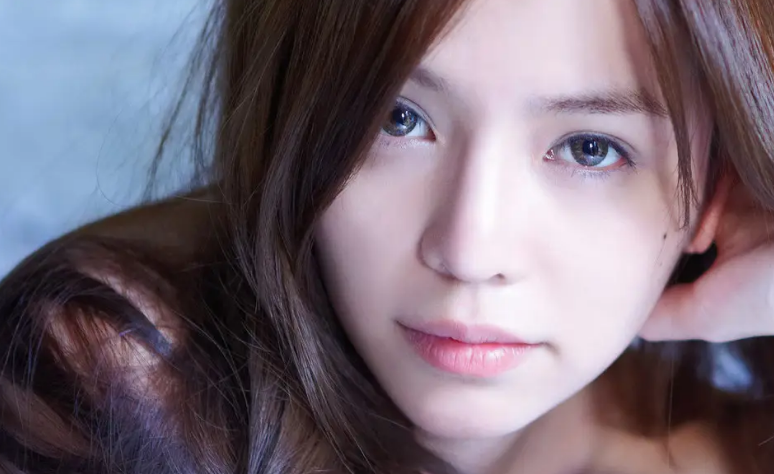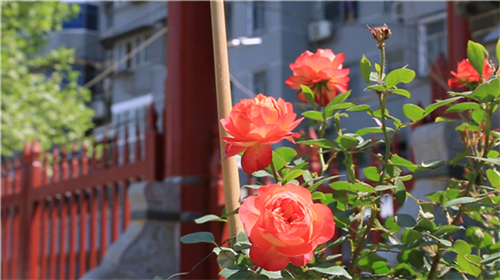豹纹守宫眼部感染和其他眼部的问题(生肉 未翻译)
Have you noticed your leopard gecko may be having issues with its vision?
Whether their eyes seem to be stuck shut, clouded over, or infected, you need to know how to best care for their vision to prevent them from developing long-term issues with their sight.
If the issue is not treated promptly, it could lead to long-term vision loss in your gecko.
Many common leopard gecko eye infections are caused by trauma or foreign bodies in the eye. However, conjunctivitis and other eye infections may also play a role. Stuck shed can inhibit their eyesight, and hypovitaminosis A can lead to squinting and other vision problems.
In most cases, you want to see a veterinarian for topical antibiotics and guidance.
If you are ready to dig deep into the issues plaguing your leopard gecko’s vision, this detailed guide will help.
Problematic Eye Issues In Leopard GeckosEye issues seem to be relatively common among leopard gecko owners, with many people reporting issues with them opening their eyes or having a cloudy eye.
Eye infections are also a common complaint which can lead to long-term eye damage.
One of the unique things about leopard geckos is their movable eyelids.
Unlike other reptiles, the leopard gecko has eyelids which do move, allowing them to blink and close their eyes.
Unfortunately, these eyelids can cause problems for your gecko’s overall eye health when they run into issues such as a stuck shed.
Congenital issues also occur with these reptiles, though they are far less common than issues like trauma or infection.
It is possible for them to be born with eye abnormalities due to inbreeding for a breeder who is not careful.
As a result of these abnormalities, they may have a more difficult time opening and closing the eyelids.
In turn, this leads to damage to the eye and ulcers.
It is also possible for them to be born with their eyes fused closed.
Blindness is a given in this type of situation.
Raising a blind leopard gecko can certainly be a challenge, especially for a new owner who is just beginning to dabble in the world of reptiles.
Be sure to avoid this issue if you have never raised a gecko before.
Standard EyesightIn general, their eyesight tends to be impeccable.
With eyes located on each side of the head, their peripheral vision is excellent.
However, those who come in a lighter color or morph tend to be more sensitive in the eye area.
Bright lights will often affect them more than they would a darker-colored lizard.
You may attempt to correct the issue with your gecko’s vision by washing their eyes with saline.
Only use sterile saline (often found in the eye care department of the pharmacy).
It should be preservative-free to ensure it is as pure as possible for rinsing out these delicate tissues.
Always consult a veterinarian if this does not correct the issue or your gecko still seems to be in pain.
Make sure to take your gecko to a veterinarian who specializes in reptiles.
A regular small animal vet who deals with dogs and cats does not have the experience necessary to diagnose and treat a reptile’s vision issues.
They will often need topical antibiotics or eye drops, but there are also times where a short procedure may need to be performed to remove the trauma or foreign body from the eye.
Leopard Gecko Eyes ClosedIn many cases, a leopard gecko closes his eyes to deal with an injury to the eye. It can result from a foreign body, leading to an ulcer. Abscesses located just underneath the eye may also contribute to this problem. Take them to a veterinarian after flushing the eye with sterile saline solution.
There are many reasons why your leopard gecko may have his eyes closed and seem unable to open them.
In many cases, this is the result of a foreign body lodged in the eye. It can result from getting loose substrates such as sand or walnut shells stuck in the eye.
If your gecko cannot promptly remove the debris from its eye, it can lead to worsening issues such as an inability to open the eyes.
If something is stuck in your gecko’s eye, then it could lead to an eye ulcer.
Ulcers develop when the cornea is scratched or harmed from exposure to an injury.
It results from a hole or a tear in this delicate section of the eye and is often quite painful for your leopard gecko.
You might be dealing with an ulcer if they are keeping their eye shut, licking the eye often to clean it, or attempting to scratch it with their feet.
Another reason they may have their eyes closed is due to an abscess.
Often, the subcutaneous abscesses seen by veterinarians are not located in the eye.
Rather, they are found just underneath the eye.
However, the abscess leads to swelling in the region directly above it.
In this case, it means the eye area may swell and lead to your gecko’s inability to open its eye completely or at all.
Abscesses might be easy to spot by the average reptile owner.
Take a closer look at the affected eye area for a bump which was previously not there.
This abscess is potentially caused by any number of common occurrences, including:
An injury sustained during a fight with another gecko
A bite from a mealworm or cricket during feeding time
A scratch from a branch in the enclosure
An injury from rubbing up against the hide in the enclosure
If your gecko is having difficulty opening his eyes, you should consider making an appointment to see a veterinarian.
However, there are a few things to do in the meantime to resolve the issue on your own.
The first thing to do is flush the eye out with sterile saline, a commonly used solution for those who wear contact lenses.
This is easily purchased over the counter at your local pharmacy in the eye care section.
When flushing the eye, get the sterile saline into and around the eye as much as possible.
However, you should never force the eye to open in an attempt to get the solution directly into the eyeball.
The tip of the container should also never touch the eye or eyelid, as this can cause further damage to the struggling eyes.
It is always best to take your reptile to the veterinarian to ensure you have removed all of the foreign body from the eye sockets.
Sustained damage may need to be treated with antibiotic eye drops, or they may offer pain medications while the healing takes place.
An abscess may not be able to be treated with antibiotics or medication.
In some cases, the only option to effectively rid your gecko of an abscess is to surgically remove it.
If the abscess is also harboring bacteria, it might be doubly hard to treat.
You need the support of an experienced veterinarian to effectively treat an abscess and prevent it from ruining your gecko’s eyesight long-term.
Even if an abscess does not develop, extreme trauma to the eye can require surgical intervention.
If the damage sustained is too severe, you may need to surgically close the eye.
This is not something which will go away on its own, and there is nothing you are able to do about it from the comfort of your home.
As always, you need to seek medical attention for your beloved gecko.
Leopard Gecko Cloudy Eye: Retained Eyelid LiningA retained eyelid lining or a piece of stuck shed over the eye can lead to issues for your gecko’s sight. You might be able to spot this by looking for other areas with stuck shed. It might be removed at home using sterile saline and a Q-tip, or contact your veterinarian for assistance.
Have you noticed your leopard gecko attempting to shed its skin in the last few days?
If they are having a hard time getting off the old skin, they may also have a hard time shedding the dead skin on their eyelid lining, contributing to further eye issues.
Chances are you are likely able to spot a gecko who has trouble shedding by the flakes of skin still attached to their head and neck area.
Learn more about how to help leopard geckos with shedding.
Spotting these should be a clear warning sign of potential eye issues and warrants a closer look at the eyelid area.
This common occurrence needs to be treated quickly.
If they retain this skin or have a buildup of keratin in their conjunctival sac, it can lead to impaction of the eye.
In other words, the dead skin will form a type of plug over the eye.
If you leave this plug untreated, the eye will eventually fuse with this and lead to permanent eye damage or blindness in the affected area.
This is another situation where sterile saline may save the day.
Gather up a cotton swab or Q-tip and your saline solution.
Rinse the eyelid with the saline and then apply a small amount of pressure with the Q-tip, rolling it in an upward motion.
You may have to do this a few times before you start to see any headway.
If the stuck shed does not give way, you do not want to force it.
It may be time to make an appointment to see your local veterinarian.
The best thing to do is to prevent stuck shed in the first place.
This is often caused by a lack of moisture or humidity in the enclosure.
If you have the tank heater up too high, it may reduce the humidity of the tank if you are not careful.
Make sure to give them a moist hide on the warm side of the gallon tank to hide out in.
Line it with a substance which helps retain moisture, such as sphagnum moss.
Another key way to help your leopard gecko shed is to place them in warm water once or twice each week.
Fill a plastic container with a small splash of warm water, ensuring it is not too deep for your reptile.
This warm bath should never go past their knees, which means you do not need much water at all.
Allow them to splash and play for about fifteen to twenty minutes before putting them back in their enclosure.
After their bath, you may have more luck dislodging stuck shed, including their eyelids.
Consider giving them a nice warm bath before rinsing the eye with saline and then attempting to roll the stuck shed off their eyelid with a Q-tip.
If it persists beyond this point, you need to take them to a veterinarian to have it thoroughly removed with the use of sedation if necessary.
You may also be interested in learning how long it take a leopard gecko to shed.
Leopard Gecko Vitamin Deficiency Or Hypovitaminosis AEye problems might be the result of a vitamin deficiency in the diet. Hypovitaminosis A is low vitamin A levels in the body. You need to supplement their diet through multivitamins or gut-loaded insects to help correct the deficiency.
The supplementation of your gecko’s diet is a hotly debated topic.
Low levels of vitamin A (also known as hypovitaminosis A) can contribute to worsening eye problems.
Avoid this with a varied diet, but the exact amount of vitamin A your gecko should consume is not widely known.
The best thing to do is do your best to give them natural sources of this crucial vitamin as often as possible.
For example, you should feed gut-loaded insects, which were fed various fruits, vegetables, grains, and even flaked fish food.
In particular, you may want to consider giving your gecko silkworms.
Another helpful addition to their diet includes small frozen or thawed pinkie mice.
These should only be given to adults who are large enough to consume such a treat.
These are readily available at any pet store and are very high in the vitamin A your leopard gecko needs in their diet.
If you are concerned they may not be getting enough vitamin A through their diet; you may also feed them multivitamins containing vitamin A.
What should you look for to determine if they are suffering from a vitamin A deficiency?
First, you may start to notice their skin change color.
It will be duller than it used to be, and your reptile will lose the vibrant coloring which makes them so beautiful.
They also typically have a decreased appetite and will have a more difficult time catching the feeder insects you give them.
Other common symptoms associated with hypovitaminosis A pertain directly to the eyes.
There will frequently be excess tear production and eye squinting.
When they shed their skin, they will have a more difficult time and may develop a film under the eyelids, which begins to cover the eye.
As a result, their vision will suffer.
Pay careful attention to their eye area as hypovitaminosis A can develop a pseudo-abscess near the eye.
If this abscess grows too large, it can impede their eyesight and lead to bulging around the eye.
It may need to be surgically removed as well as treating the underlying vitamin deficiency issue.
Be careful not to give them too much vitamin A, as this can lead to the opposite problem known as hypervitaminosis A.
A common symptom of this condition is dry and flaky skin due to the tissue damage it causes.
Before you start to supplement their diet, you may consider taking them to see an experienced veterinarian specializing in reptiles.
They can help you figure out the appropriate amount of vitamin A to feed your gecko without overdoing it.
The process is highly individualized, so they can offer important feedback to keep your gecko as healthy as possible.
Leopard Gecko Eye Infection TreatmentGecko eye infections can take many forms stemming from injury to the eye to bacterial infections like conjunctivitis (better known as pink eye). Take your gecko to the veterinarian as they will need antibiotic ointment or eye drops to heal their infection.
Take note if your leopard gecko has recently had an injury or foreign body in its eye.
Recent injury to such a sensitive area leads to a huge risk of infection.
Infection can stem from a virus, fungus, or bacteria in this case.
Telling the difference between these types of infections is extremely difficult, and it may not matter much.
Regardless of the type of infection, you need to get your gecko to the veterinarian.
Medication is typically the best first-line treatment for an infection to the eye to prevent it from causing long-term damage.
Conjunctivitis is a common eye infection you may see.
You may know this type of infection by another name, as it is also commonly found in humans.
The more common moniker for conjunctivitis is “pink eye.”
In most cases, conjunctivitis sets in as a secondary infection.
Harmful organisms recognize the weakened area and capitalize on it, compounding the issue and making it worse.
The primary symptom of this type of infection is a closed eye and a bulging eyelid resulting from the discharge accumulating in the eye area.
Much like many of the other ailments your gecko may suffer from, this one is also an infection which is more easily prevented than cured.
One of the most common causes of conjunctivitis is bacteria buildup in the enclosure.
In other words, a dirty enclosure which has not been cleaned often results in this type of infection.
Dirty water can lead to conjunctivitis, so be sure to clean their water dish regularly as well.
If you believe your leopard gecko may have conjunctivitis, this is another occasion to make an appointment to see your veterinarian.
They will want to prescribe an antibiotic ointment or eye drops to help clear up the infection and get your gecko’s eyesight back to normal.
If you notice the signs and symptoms of this eye issue, seek treatment quickly, as it can adversely affect your gecko’s sight if left untreated.
Another issue sometimes found in these reptiles is parasites.
Some veterinarians report finding long and stringy worms in the conjunctival sac of the eye.
If you notice anything stringy and abnormal about the eyes of your leopard gecko, you should treat it seriously.
They need to be taken to an avian and exotic service or a specialized veterinarian to be treated with the proper medication.
Parasitic infection is not something which will resolve on its own.
Eye Proptosis In Leopard GeckosWhile this is a relatively uncommon issue, eye proptosis occurs when the eye falls out of the eye socket. Often, this is caused by squeezing the gecko too hard. This must be treated by a veterinarian and often results in loss of the eye.
There is a reason leopard geckos should only be handled by responsible adults and older children.
They are extremely delicate animals and need to be treated as such.
Rough handling such as squeezing can lead to this uncommon but very painful condition known as eye proptosis.
In this situation, the eye bulges out of the eye socket.
When the eye pops out, it absolutely must be seen by a veterinarian as soon as possible.
In most situations, the damage to the eye is irreparable.
The only real solution to proptosis is to remove the eye altogether as it cannot be placed back into the socket.
This is why careful handling is so important to the health of your gecko.
Never allow them to be handled by children who are too rough with these small and fragile creatures.









